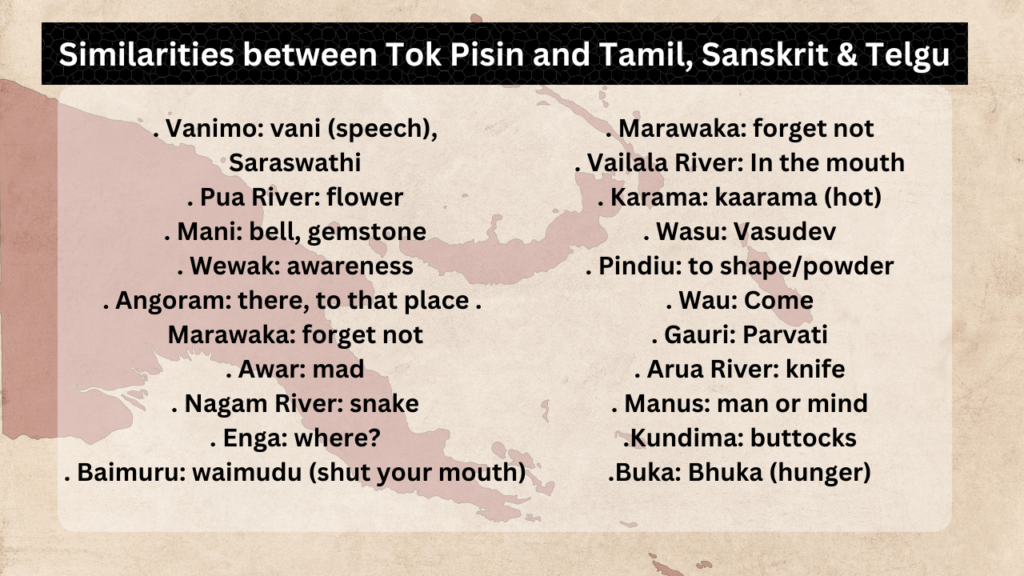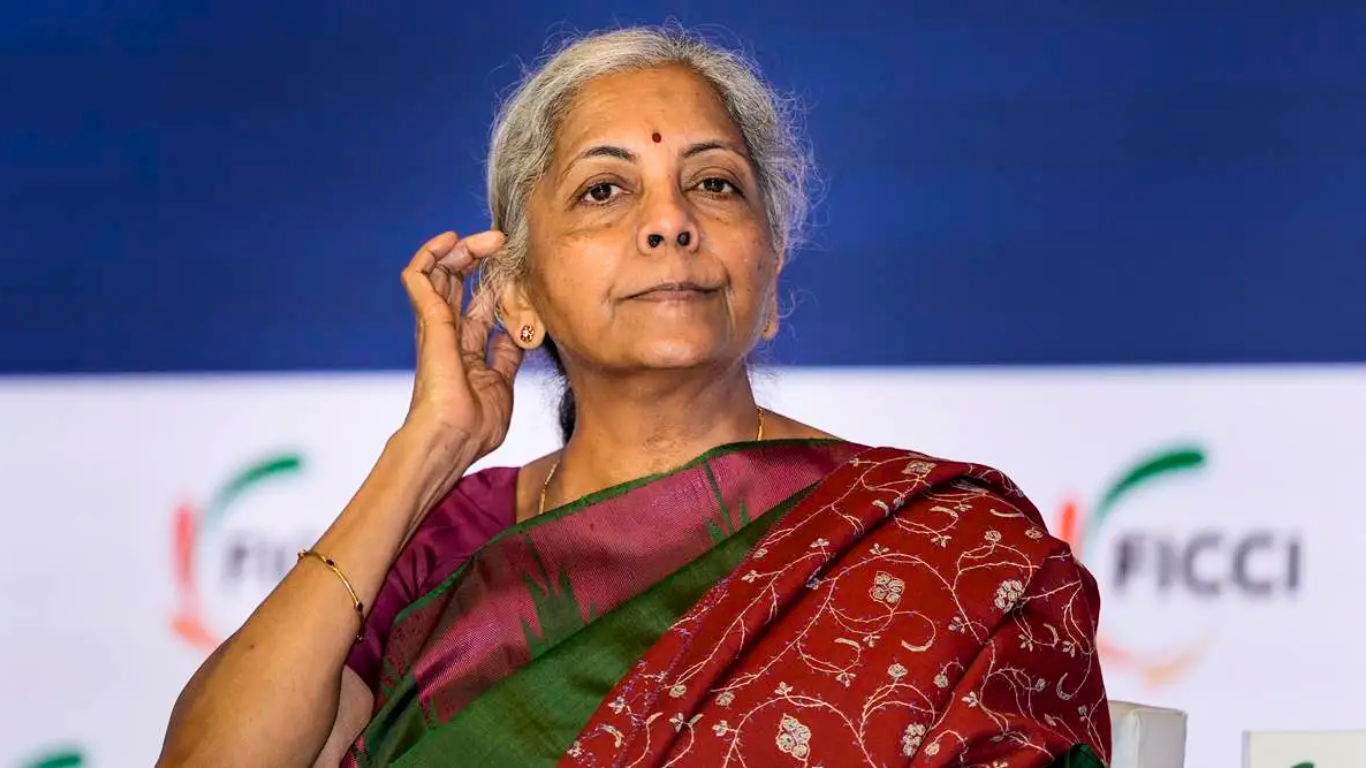


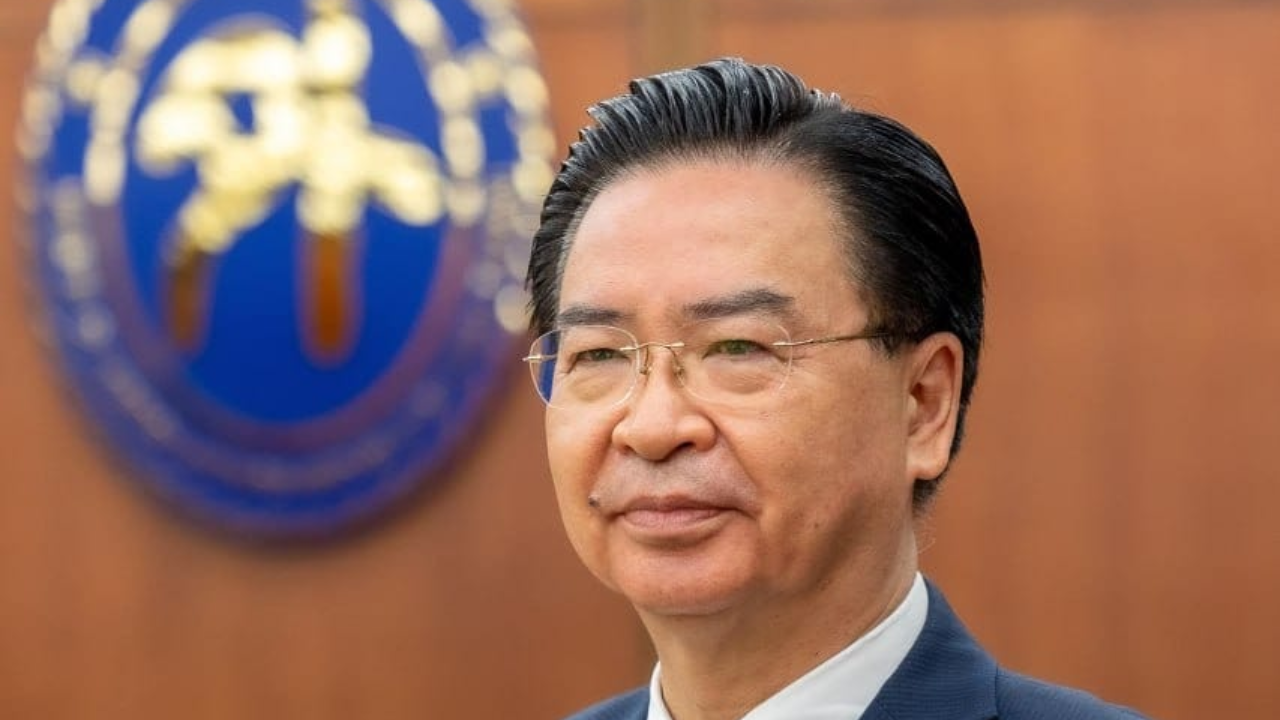
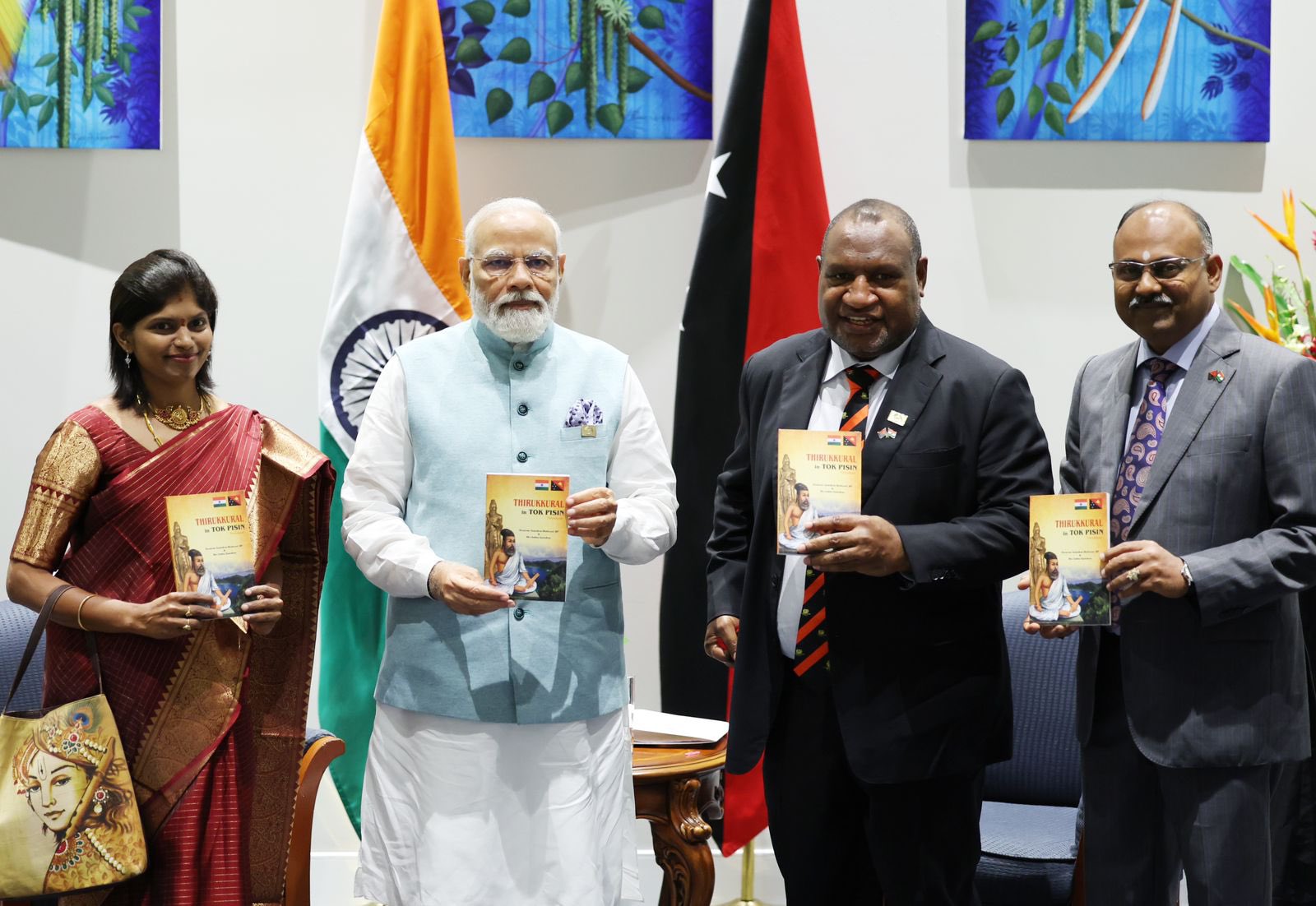


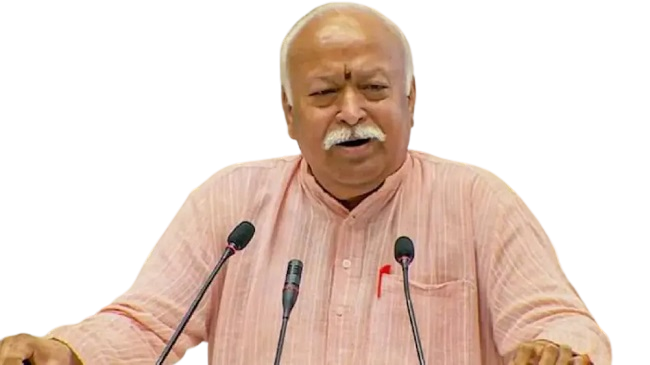



Prime Minister Narendra Modi and PNG Prime Minister on Monday launched the Tok Pisin translation of the Tamil book ‘Thirukkural’ following which, PM Modi’s historic and successful visit to Papua New Guinea came to an end as he departed for Australia. At his arrival, PNG Prime Minister James Marape bowed down to touch the feet of Narendra Modi, which was revered by the Indian community back home as a gesture of respect.
However, before departing for Australia, PM Narendra Modi and PNG PM James Marape together launched the old Tamil classic ‘Thirukkural’ by revered poet and philosopher Thiruvalluvar, in Tok Pisin language. The idea behind the book launch was to bring the communities of the two nations closer to each other.
Originally written in ‘Tamil’ language, the book was translated into Tok Pisin by Subha Sasindran, a respected linguist. PM Modi has often quoted Thirukkural as the book which “remains relevant even today and can serve as an inspiration for the present generation.” This being said, there is another relationship that bounds these two nations together in a single thread. These are the similarities between the PNG language Tok Pisin and Indian languages such as Tamil, Sanskrit, and Telugu.
Several words are used in this Oceania country ranging from day-to-day words, names, surnames, and places that can certainly remind you of Dravidian touch in them. These words not just sound the same but are also the same in terms of meaning, grammar, and phonetics.
There are towns in Papua New Guinea that have Tamil meanings such as Wau (come here), Karimui (blackface), Keveri Hills, and Linga Linga which roughly translates into Shiva. At Goraka region you may find places named Ashaloka and Ramu valley.
There are some other daily usage words as well like Erave (sun), Nagam (snake), and Pua (flower) which have the exact same translation in Tamil. Other than these, the PNG surnames also draw similar signifiers like Sam Kuala where Kuala means short man, John Muliap, wherein Muliap translates into ‘Muli’ meaning corner or radish and Robert Namalue, in which Namalue means our man in Tamil language.
Interestingly, a common Tamil name is Kittappa which can also be found used frequently in Papua New Guinea and means father-in-law in Tok Pisin whereas same word in Tamil means near-father. An areca nut, which is often used in one of India’s famous dessert, Paan is even called a ‘supari’ in New Guinea language.
Despite having deep similarities in meaning and pronunciation it is not clear what lies behind the similar sounding names. In 2009 the Tamil Nadu State Department of Archaeology published a paper by the name of KVS Krishna who wanted to study the reason and relevance between the two languages and the point of their confluence.
If Linguists are to believe, Papua New Guinea at one point was an ocean of languages with over 750 indigenous languages all of which slowly died out. The distance between the two countries is about 8000 kilometers and have a large ocean in the middle to separate them, so how is this possible that without any linguistic, historical, or commercial trade relations have the same names and usage?
Here are some words compiled by us:
